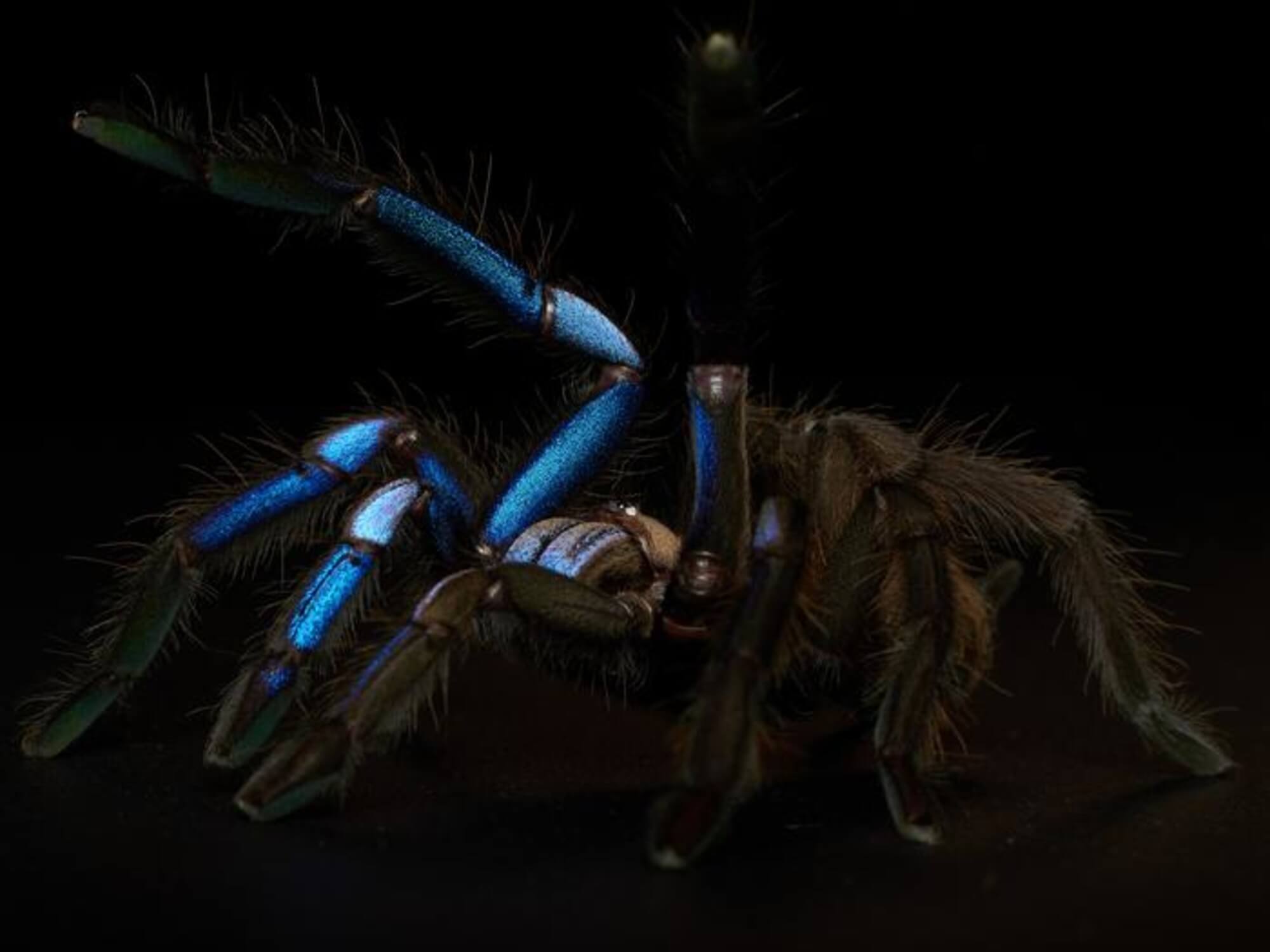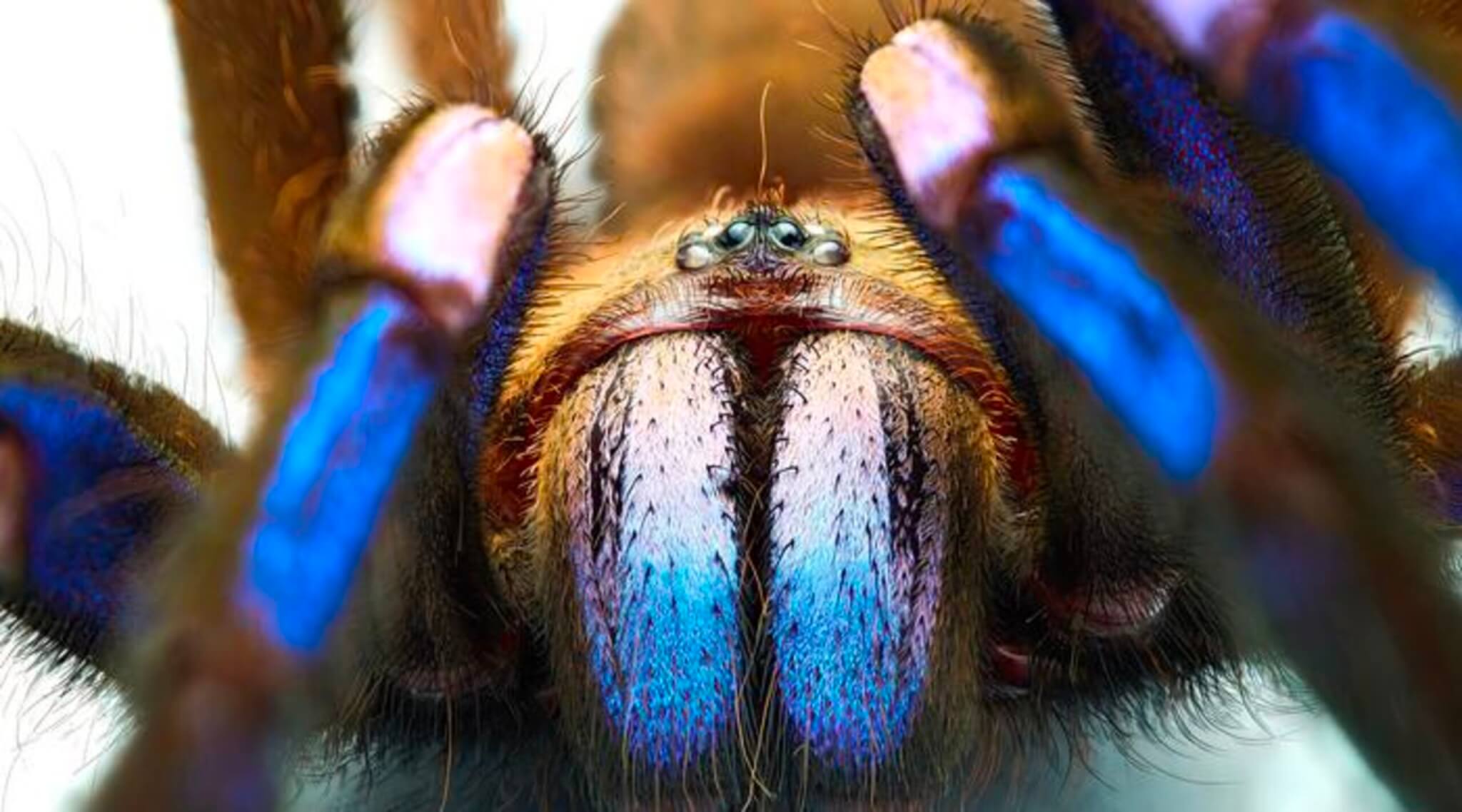PHANG-NGA, Thailand — A jewel of the forest has been discovered in Asia. In a thrilling revelation, researchers have encountered a new tarantula species with an electric blue hue in Thailand’s mangrove forests. This discovery comes after the 2022 finding of the bamboo culm tarantula, the first tarantula species known to reside inside bamboo stalks.
“In 2022, the bamboo culm tarantula was discovered, marking the first known instance of a tarantula species living inside bamboo stalks,” says researcher Dr. Narin Chomphuphuang in a media release. “Thanks to this discovery, we were inspired to rejoin the team for a fantastic expedition, during which we encountered a captivating new species of electric blue tarantula.”

Scientists described the challenge of capturing these rare creatures.
“The first specimen we found was on a tree in the mangrove forest. These tarantulas inhabit hollow trees, and the difficulty of catching an electric-blue tarantula lies in the need to climb a tree and lure it out of a complex of hollows amid humid and slippery conditions,” explains Dr. Narin. “During our expedition, we walked in the evening and at night during low tide, managing to collect only two of them.”
The electric blue shade of the tarantula doesn’t stem from blue pigments. Instead, according to Dr. Narin, it’s due to the “unique structure of their hair, which incorporates nanostructures that manipulate light to create this striking blue appearance.”
In nature, blue is a rarity, and the mechanism for an animal to appear blue requires it to reflect high-energy blue light, making this tarantula’s coloration all the more special.

Previously, this species had been spotted in commercial tarantula markets as the “Chilobrachys sp. Electric Blue Tarantula,” but without any official documentation on its unique characteristics or habitat.
“The electric blue tarantula demonstrates remarkable adaptability. These tarantulas can thrive in arboreal as well as terrestrial burrows in evergreen forests. However, when it comes to mangrove forests, their habitat is restricted to residing inside tree hollows due to the influence of tides,” says Dr. Narin.
The tarantula’s official scientific name, Chilobrachys natanicharum, was decided upon through an auction. Nichada Properties Co., Ltd., Thailand, won the naming rights and combined the names of company executives Mr. Natakorn Changrew and Ms. Nichada Changrew. The auction’s proceeds were donated to support the education of Thailand’s Lahu children and aid impoverished cancer patients.

Dr. Narin emphasized the importance of taxonomy, the science of naming species, in understanding and preserving biodiversity. With mangrove forests under the threat of deforestation and the electric blue tarantula being among the world’s rarest, the researchers urged for reflection.
“It’s essential for the general public to understand the significance of taxonomy as a fundamental aspect of research. Taxonomy serves a vital role, ranging from the basic, such as when people inquire on social media about the name of a spider, to conducting crucial research aimed at preserving these species from extinction,” says Dr. Narin.
The study is published in the journal ZooKeys.
You might also be interested in:
- Ghastly 310-million-year-old spider fossil unearthed
- Mamma Mia! Meet the new spider species named after pop band ABBA
- Endangered insects and spiders being sold illegally on eBay and Amazon, study shows

